12 Home Remedies For Freckles On Face And Prevention Tips
Keep this UV-induced skin condition at bay with some commonly available antidotes.
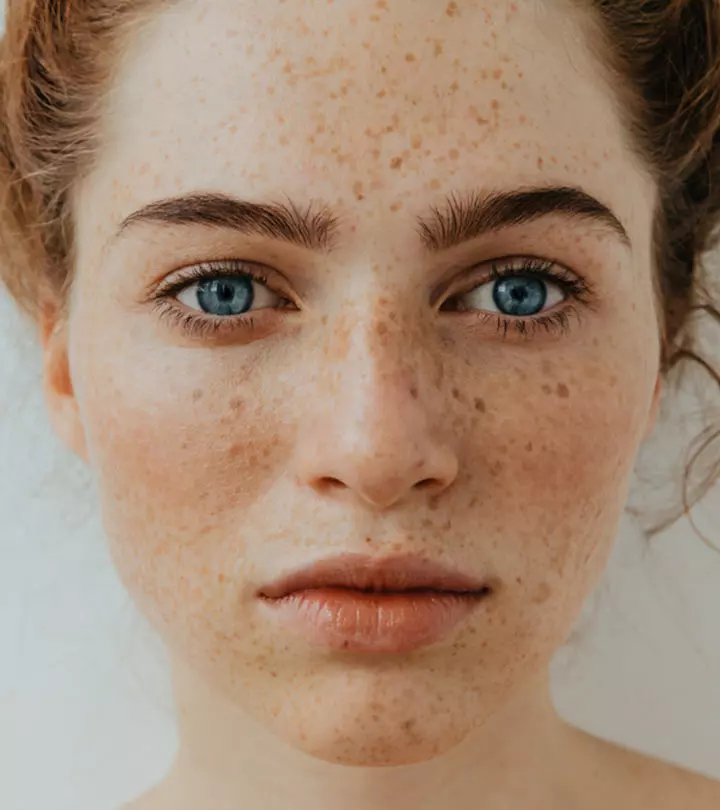
Image: Shutterstock
Freckles are flat, brown/ beige circular spots that appear on the skin mainly due to ultraviolet light exposure. They typically fade in winter and are common in low-pigmented, red-headed individuals (1). Most freckles are harmless but some unusual-looking freckles may become malignant skin cancer (2).
This article discusses freckles in depth and lists the ways you can reduce their appearance if you want to. Read on to learn how to get rid of freckles.
 Did You Know?
Did You Know?In This Article
What Causes Freckles?
The development of freckles is primarily attributed to exposure to sunlight and a possible genetic predisposition to developing freckles (3).
Our skin produces melanin on exposure to UV radiation from the sun or tanning lights. This then leads to the over-deposition of melanin in one spot, which causes freckles. Freckles occur mostly in people with blonde or red hair, fair skin, and light-colored eyes.
Note: Freckles do not form without exposure to sunlight. If you observe their appearance on parts of your body that are not exposed to sunlight, it may be a sign of malignant skin cancer. Seek medical help immediately in such cases. Any other part, like freckles on the wrist, face or hands, they may be normal.

There are several treatment options available to diminish the appearance of freckles, including skin-lightening creams, pigment lasers, and chemical peels. But if you want to try some home remedies to lighten freckles, you can read about them below.
Do note that the effectiveness of these remedies depends on your skin type and genetics. Also, always do a patch test before applying any of these ingredients to your face.
Note: These remedies are not scientifically proven to eliminate freckles directly. If you are sensitive to certain ingredients, do not go ahead with the recipe.
Key Takeaways
- A sunscreen with an SPF of 30 or more works in a broad spectrum.
- Citric acid, which is present in lemon juice, can gradually lighten freckles.
- Buttermilk can help freckles vanish and is a natural skin lightener.
- Aloe vera helps make freckles less noticeable and evens out the skin tone.
- Potatoes have an enzyme called catecholase that helps even out the skin tone and lighten freckles.
- Sandalwood lightens the skin naturally and can help freckles disappear.
- Honey can help freckles become less noticeable and is a natural moisturizer.
- A potent antioxidant, vitamin C can help fade freckles.
- The enzyme papain found in papayas can help fade freckles.
Home Remedies That May Help Lighten Freckles
- Apple Cider Vinegar
- Lemon
- Aloe Vera
- Turmeric
- Yogurt
- Honey
- Eucalyptus Oil
- Essential Oil
- Cocoa Butter
- Shea Butter
- Eggplant
- Banana Peel
- Kiwi Fruit
1. Apple Cider Vinegar
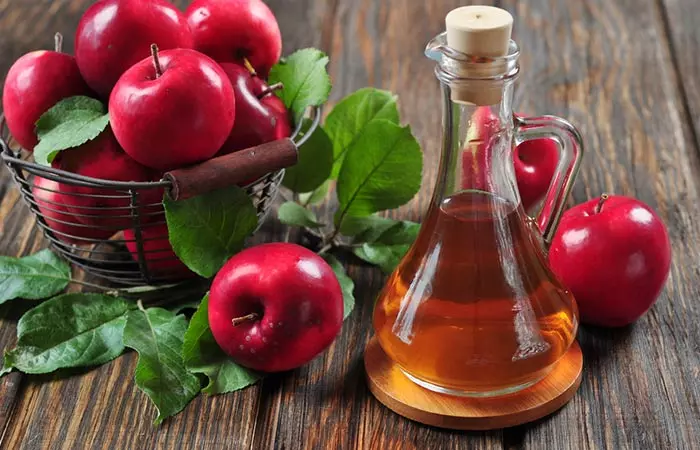
The malic acid in ACV exfoliates the darkened skin cells and promotes overall skin exfoliation (4). This helps in lightening freckles.
You Will Need
- 1 tablespoon apple cider vinegar
- 1 teaspoon honey
What You Have To Do
- Mix the honey and vinegar, and apply on the freckles. You can also apply this mixture to the entire face.
- Leave it on for 15-20 minutes.
- Rinse with lukewarm water.
How Often You Should Do This
Apply this once every day on your freckles. If you are applying it on your entire face, repeat every alternate day.
2. Lemon
Lemon is a rich source of vitamin C. Vitamin C exhibits photoprotective and anti-pigmentary properties that help in sun protection. It reduces melanin production to decrease dark spots and pigmentation on your skin (5).
You Will Need
- Juice of a lemon
- Cotton pad
What You Have To Do
- Squeeze a lemon and collect the juice in a bowl.
- Using a cotton pad, apply the juice on the area with freckles.
- Leave it on your skin for 15-20 minutes and rinse off.
How Often You Should Do This
You can follow this two times a week.
Caution: Do not follow this remedy if you have sensitive skin as lemon juice may cause redness and irritation. Also, ensure you apply sunscreen before you step out in the sun as lemon juice makes your skin photosensitive.
3. Aloe Vera
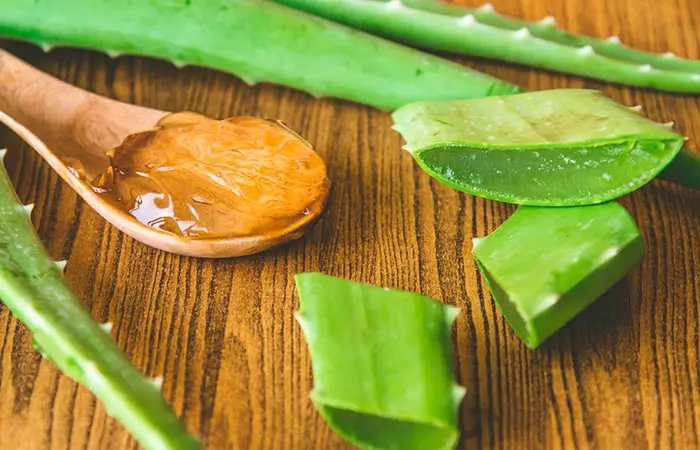
The topical application of aloe vera gel triggers the production of metallothioneini Low molecular weight proteins that provide protection against DNA damage, oxidative stress, etc. in the skin, which prevents UV-induced damage (6). It can also inhibit tyrosinasei A copper-containing enzyme responsible for the first step in melanin production and the process of pigmentation. activity (7). Thus, it may decrease melanin deposition in the skin, leading to lesser freckles.
You Will Need
Fresh aloe vera gel
What You Have To Do
- Apply some fresh aloe gel on the freckles and massage for 2-3 minutes.
- Leave it on for 10 minutes and then rinse it off.
- You can also leave it on overnight.
How Often You Should Do This
Repeat this every day.
 Quick Tip
Quick Tip3. Turmeric
Research shows that curcumin, the primary component of turmeric, inhibits melanogenesis (8). This means that it may reduce the excessive deposition of melanin in the skin that causes freckles.
You Will Need
- 1 teaspoon turmeric powder
- 1 teaspoon lemon juice
What You Have To Do
- Make a fine paste of turmeric powder and lemon juice.
- Apply this paste on the freckled areas and wait for it to dry.
- Rinse off thoroughly with water.
How Often You Should Do This
Do this once every week.
4. Yogurt
Yogurt
contains lactic acid. Lactic acid inhibits tyrosinase activity, suppresses melanin formation, and reduces hyperpigmentation (9). These effects may help reduce the appearance of freckles.
You Will Need
2-3 tablespoons of yogurt
What You Have To Do
- 1. Apply yogurt on the freckled areas.
- 2. Massage in a circular motion for about 15-20 minutes.
- 3. Wash off with water.
How Often You Should Do This
Apply this daily.
5. Honey
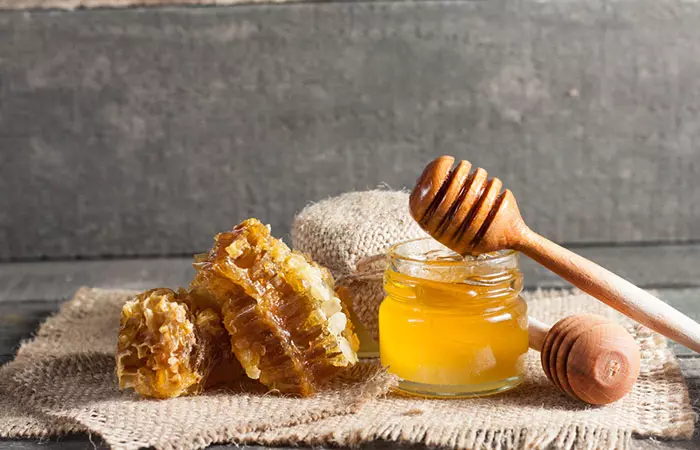
Honey contains phenolic and flavonoid compounds that may help inhibit tyrosinase activity (10). This controls the excess production of melanin in your skin, which, in turn, may reduce the occurrence of freckles.
You Will Need
- 1 teaspoon of lemon juice
- 1 tablespoon of fresh honey
What You Have To Do
- Make a thick paste of honey and lemon juice.
- Apply this paste on the areas with freckles.
- Leave it on for 15-20 minutes before rinsing it off
How Often You Should Do This
Do this two times a week.
Caution: Do not follow this remedy if you have sensitive skin as lemon juice may cause redness and irritation. Also, apply sunscreen before you go out as lemon juice makes your skin photosensitive.
6. Eucalyptus Oil
Eucalyptus oil is an essential oil that is widely used for its pharmacological properties. Eucalyptus oil inhibits tyrosinase activity and melanin synthesis, which helps reduce hyperpigmentation (11). Thus, it may help in reducing freckles.
You Will Need
- 2-3 drops of eucalyptus oil
- A few drops of carrier oil
What You Have To Do
- Dilute two to three drops of eucalyptus oil with a carrier like sweet almond oil.
- Apply this on the freckled areas and leave it on for about 20 minutes.
- Wash off using a washcloth.
How Often You Should Do This
Do this once every day before going to bed.
Note:Do not try this remedy if you have hypersensitive skin.
7. Pomelo Essential Oil
Pomelo oil is known to exhibit anti-melanogenic and antioxidant properties (12). This means that it decreases the synthesis of melanin and may reduce the appearance of freckles.
You Will Need
- 2-3 drops of pomelo essential oil
- A few drops of carrier oil
What You Have To Do
- Take two to three drops of pomelo essential oil and dilute it with a carrier like sweet almond or jojoba oil.
- Apply this on the freckled areas.
- Leave it on for 20 minutes before rinsing off with water.
How Often You Should Do This
Repeat this daily before going to bed.
8. Cocoa Butter
Cocoa butter contains bioactive compounds, including polyphenols, that offer photoprotection and can reverse the effects of UV-induced skin damage (13). Thus, it may prevent the development of brown spots caused by freckles.
You Will Need
1-2 teaspoons of cocoa butter
What You Have To Do
- 1. Take one to two teaspoons of cocoa butter.
- 2. Apply on the freckles and massage it gently into your skin.
- 3. Leave it on overnight and wash off with a cleanser the next morning.
How Often You Should Do This
You can repeat this every night before going to bed for 2-3 weeks.
9. Shea Butter
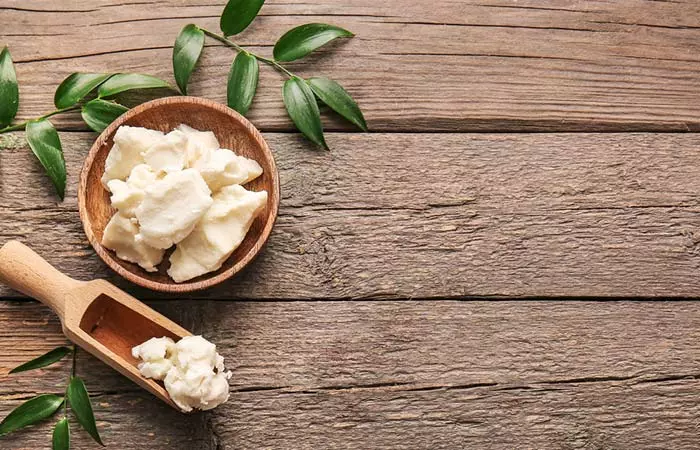
Shea kernels have been found to inhibit melanogenesis (14). Shea butter may help decrease melanin synthesis and reduce the occurrence of freckles.
You Will Need
1-2 teaspoons of shea butter
What You Have To Do
- Heat one to two teaspoons of shea butter until it is warm.
- Massage it gently into the areas with freckles.
- Leave it on overnight and rinse it off in the morning.
How Often You Should Do This
Repeat this every night for 3-4 weeks.
10. Eggplant
is rich in bioactive compounds, such as vitamins, phenolics, and antioxidants (15). These compounds exhibit photoprotective properties that may help prevent skin damage on exposure to UV rays of the sun (16). This may help reduce freckles.
You Will Need
1 fresh eggplant
What You Have To Do
- Cut the eggplant into slices.
- Rub these slices on the freckles in a circular motion.
- Let the juice from the eggplant be on your skin for 15 minutes.
- Wash thoroughly with water.
How Often You Should Do This
Repeat this once every day.
11. Banana Peel
Banana peel contains bioactive compounds that can inhibit melanogenesis and, thus, reduce freckles (17).
You Will Need
A ripe banana peel
What You Have To Do
- Rub the peel of a ripe banana on the freckled areas of your skin.
- Leave it on for 20 minutes.
- Wash it off.
How Often You Should Do This
Do this once every day.
12. Kiwi Fruit
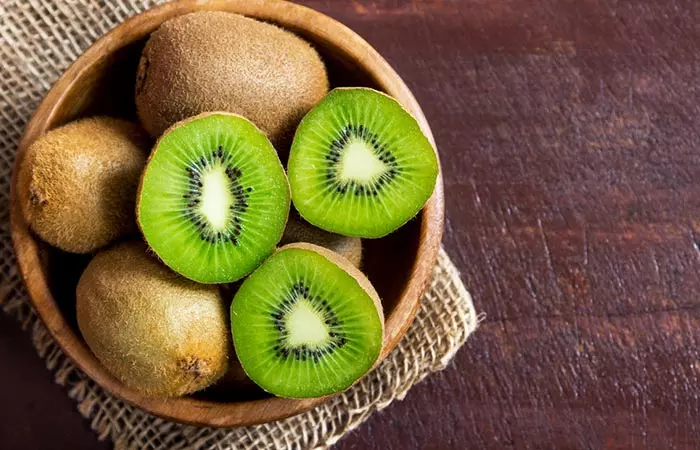
Kiwi fruit contains flavonoids like quercetin that may inhibit tyrosinase activity (18). This may lead to a reduction in any skin pigmentation, including freckles.
You Will Need
- 1 kiwi fruit
- 2-3 strawberries
What You Have To Do
- Make a thick paste of the two fruits by blending them.
- Apply this fruit pack on the areas with freckles.
- Leave it for about 20-25 minutes before rinsing it off.
How Often You Should Do This
Do this two times a week.
Note: Natural remedies may work differently for each skin type, and results can vary due to genetics. Always do a patch test to check for any adverse reactions, and reach out to a dermatologist if you have any concerns about trying these methods.
If you would like to take the medical route or want to lighten your freckles quickly, check out the medical treatment options listed below.
Medical Treatment Options
- Alpha hydroxy acid toners can help ameliorate the signs of photodamage, thus reducing the chances of freckle formation (19).
- Chemical facial peeling is an effective method for treating pigment disorders, like freckles (20).
- Laser therapy can facilitate the formation of new collagen, thereby eliminating the older epidermal cells and resulting in clearer skin. Q-switched lasers treat freckles by targeting melanin and not collagen. However, laser therapy might include complications like mild texture changes and hyperpigmentation, which can be resolved within 2-6 months. A study showed >50% improvement in freckles with negative recurrence (21), (22).
A blogger struggled with freckles on her shoulders and upper arms, having tried various creams without success. She consulted a dermatologist who recommended laser therapy. After 4 sessions, she found remarkable improvement. She shared in her blog, “There was a little redness for around 2 days and scabbing for around a week. The downtime was not too much for me to handle, I just wore blouses with sleeves and no one even noticed (i).” She is delighted with the outcome and recommends the laser for freckles and other skin issues.
- Along with the daily application of sunscreen, sunspot removal can be aided by retinoid creams, hydroquinone, chemical peels, and dermabrasion (23).
Along with following these home remedies and medical treatments, it is also good to know what kind of freckles you have to treat them more effectively. Check them out below.
Different Types Of Freckles
- Ephelides: These are the common type of freckles that are observed in most people. These freckles are flat and dark brown. Although they are genetically determined, they can also be induced through sun exposure (24).
- Solar Lentigines: These freckles are characterized by a dark brown patch on the skin. They develop in adulthood as a result of sun exposure and can be categorized as aging spots and sunspots (25). Many people wonder how to get rid of sunspots, and the good news is, simple home remedies can be a huge help.
It is also a good idea to know the risk factors of freckles and when to seek medical attention. Scroll down to find out more.
Risk Factors Of Freckles
Some studies show that a particular gene and frequent exposure to the sun work in tandem to develop freckles (26).
It also depends on the type of melanin:
- Pheomelanin: People with this type of melanin have a lighter skin tone and red or blonde hair. Their skin does not tan well. Pheomelanin does not protect the skin from UV radiation and increases the risk of developing freckles (27).
- Eumelanin: This type of melanin is found in brown and black hair. People with eumelanin have darker skin tones and brown or black hair. Due to this, their skin tans easily and is usually protected from skin damage by UV radiation (28).
The risk factors of solar lentigines are slightly different from those of the common freckles, and they include (26):
- A darker skin tone, which directly translates to a higher capacity of tanning and solar lentigines.
- History of developing freckles
- Exposure to sunlight
- Current intake of oral contraceptive or progestogeni A class of natural or synthetic steroid hormones that play a role in the maintenance of the uterus during pregnancy. treatments
How Can I Prevent Freckles?
- Always wear sunscreen for best sun protection before you step out in the sun (29).
- Wear protective clothing like full-sleeved tops and full-length pants.
- Use wide-brimmed hats or caps.
- Stay indoors during the peak hours of sunlight.
These simple remedies and prevention tips can help you tackle freckles. If you feel what you have does not fit the description of common freckles, consult your dermatologist and understand the cause of the pigmentation on your skin.
When To See Your Doctor
Freckles, by themselves, are harmless spots of melanin deposition. It could be that you have mistaken a mole for a freckle. Moles, however, pose the threat of skin cancer.
If you see any change in the size of the freckle or mole, consult your doctor immediately. Other signs include asymmetry in the shape, border, and diameter of the mole. If you see that the mole has different colors as opposed to a uniform shade, seek medical help immediately.
Freckles are a sign of beauty in some cultures and not really a cause of medical concern. But if you still want to reduce their appearance, you can try some of these home remedies. However, it is best to consult a doctor who will guide you on the most appropriate method to tackle freckles.
Many people tend to confuse age spots with freckles. Scroll down to know the difference between these two.
Age Spots Vs. Freckles
Age spots and freckles, though they may appear similar at times, the key distinctions lie in their development, appearance, and how they respond to age and sun exposure. Those small brown flat spots known as freckles often stand out more on lighter skin types.
Age spots, sometimes called sunspots, get their name because they appear later in life, typically in the mid-thirties or later. These spots are caused by years of continuous sun exposure, which causes skin cells to produce excess melanin. Age spots, unlike freckles, are more frequent in elderly people and have a longer lifespan, often requiring skin treatments for removal.
Infographic: 6 Home Remedies To Help Lighten Freckles On Face
Exposure to the sun’s UV rays can result in freckles on your face. While several medical treatments address this issue, you can opt for simple and affordable ingredients from your kitchen. We have compiled a list of home remedies you can use to improve the appearance of freckles on your face. Check them out here. Illustration: StyleCraze Design Team
Excess sun exposure may cause freckles. Skin lightening creams, chemical peels, and pigment lasers are the common treatment options to manage freckles. In addition to these freckle treatments, natural remedies with turmeric, kiwi fruit, aloe vera, red onion juice, parsley, eucalyptus oil, shea butter, eggplant, cocoa butter, and apple cider vinegar work effectively in reducing the appearance of freckles.
There are other effective home remedies, such as tomato, coconut oil, chamomile tea with mint, oatmeal, orange peel extracts, almonds etc., that may help reduce freckles and improve skin texture (30).
You also may follow preventive tips like applying sunscreen before stepping out in the sun and wearing protective clothing and wide-brimmed caps to help prevent freckles. However, perform a patch test before following these home remedies.
Frequently Asked Questions
How long does it take to get rid of freckles?
The time taken to get rid of freckles depends on the treatment option chosen. If you opt for laser therapy, you can see results in one or two sessions. If you opt for natural methods, it might take a few weeks to see the results.
Can Asians have freckles?
Yes, they can. Freckles can occur if you have a genetic predisposition to them or stay out in the sun for long periods on a regular basis.
What are the differences between freckles, moles, and sunspots?
Freckles Vs. Sunspots Vs. Moles
Freckles occur in the form of small brown flat spots on your face. Sunspots are also known as age spots as that tend to show up much later in life. They occur due to regular exposure to sunlight on areas that are regularly exposed to sunlight. Moles are dark lesions that have a raised surface. They make their appearance at birth or soon after birth.
Are freckles permanent?
No, freckles are not permanent. They usually fade away if your skin is not regularly exposed to sunlight and through laser treatments.
What do cancerous freckles look like?
Cancerous freckles will not have a symmetric appearance, diameter, or border. They may also grow in size over time. In such cases, you must seek medical help immediately (29).
Can cucumbers remove freckles?
Yes. You may use shredded cucumbers to get rid of freckles and blemishes. Their anti-inflammatory properties can help soothe your skin (31).
Can Vaseline get rid of freckles?
No. Regular Vaseline doesn’t include any ingredients that would treat freckles; it is simply petroleum jelly that seals skin moisture.
Illustration: Home Remedies For Freckles On Face And Prevention Tips
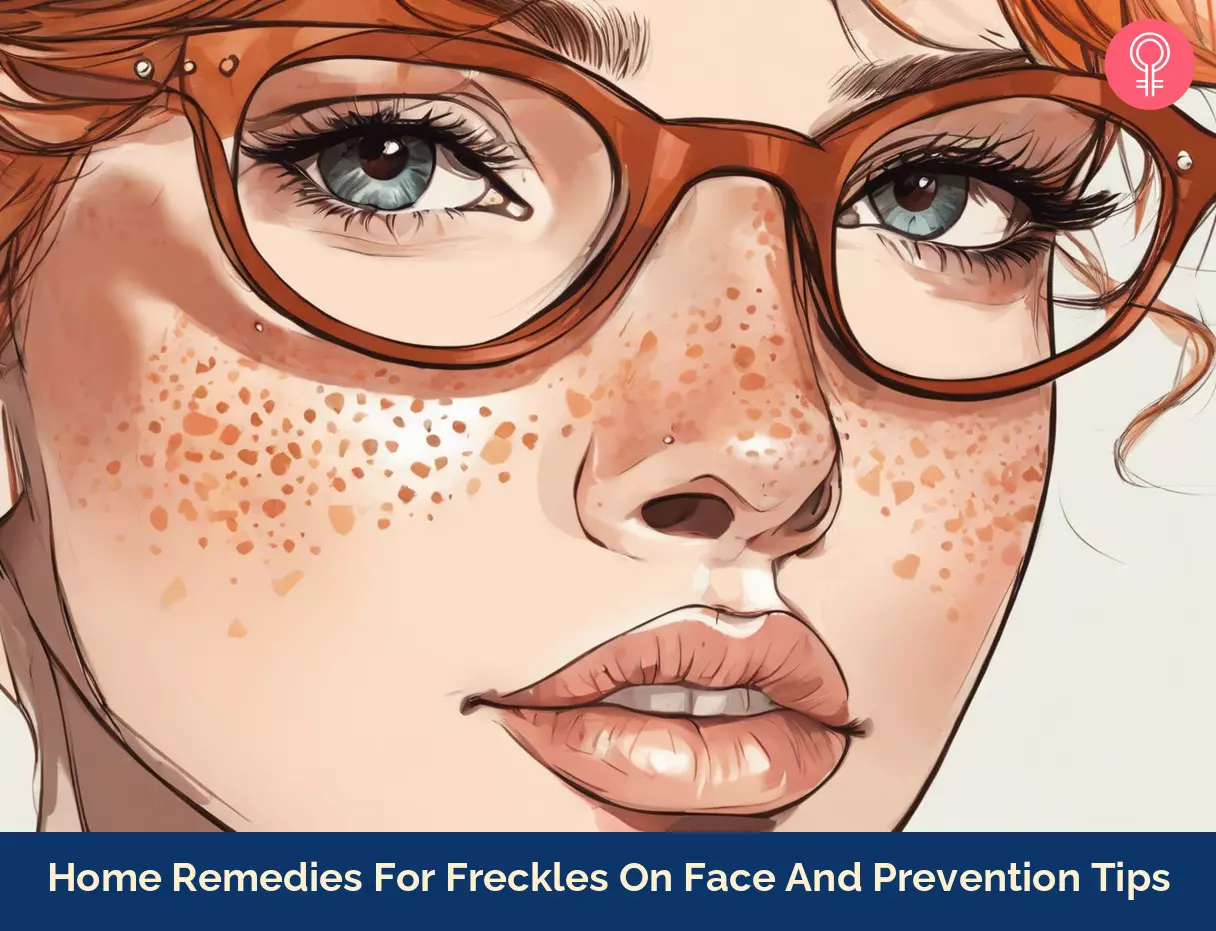
Image: Stable Diffusion/StyleCraze Design Team
If you want to know how to get clear skin, all you need is a good skin care routine and a healthy diet. Check out the video to learn 3 top natural home remedies to remove freckles on your face! Get rid of those pesky spots without harsh chemicals.
Personal Experience: Source
StyleCraze's articles are interwoven with authentic personal narratives that provide depth and resonance to our content. Below are the sources of the personal accounts referenced in this article.
i My Freckles Treatment Experience https://myjourneyinelectronicink.blogspot.com/2013/09/my-freckles-treatment-experience.htmlReferences
Articles on StyleCraze are backed by verified information from peer-reviewed and academic research papers, reputed organizations, research institutions, and medical associations to ensure accuracy and relevance. Read our editorial policy to learn more.
- Melanogenesis Inhibitors, Acta Derm Venereol, US National Library of Medicine, National Institutes of Health.
https://pubmed.ncbi.nlm.nih.gov/29972222/ - The Epidemiology, Prevention, and Detection of Melanoma
https://www.ncbi.nlm.nih.gov/pmc/articles/PMC3096196/ - Interactions between ultraviolet light and MC1R and OCA2 variants are determinants of childhood nevus and freckle phenotypes
https://pmc.ncbi.nlm.nih.gov/articles/PMC4257874/ - Are Natural Ingredients Effective in the Management of Hyperpigmentation? A Systematic Review, The Journal of clinical and aesthetic dermatology, US National Library of Medicine, National Institutes of Health.
https://www.ncbi.nlm.nih.gov/pmc/articles/PMC5843359/ - Topical Vitamin C and the Skin: Mechanisms of Action and Clinical Applications, The Journal of Clinical and Aesthetic Dermatology, US National Library of Medicine, National Institutes of Health.
https://www.ncbi.nlm.nih.gov/pmc/articles/PMC5605218/ - ALOE VERA: A SHORT REVIEW, Indian Journal of Dermatology, US National Library of Medicine, National Institutes of Health.
https://www.ncbi.nlm.nih.gov/pmc/articles/PMC2763764/ - Tyrosinase inhibitory components from Aloe vera and their antiviral activity, Journal of Enzyme Inhibition and Medicinal Chemistry, US National Library of Medicine, National Institutes of Health.
https://www.ncbi.nlm.nih.gov/pmc/articles/PMC6010052/ - Curcumin inhibits melanogenesis in human melanocytes, Phytotherapy Research, US National Library of Medicine, National Institutes of Health.
https://pubmed.ncbi.nlm.nih.gov/21584871/ - Applications of hydroxy acids: classification, mechanisms, and photoactivity, Clinical, Cosmetic and Investigational Dermatology, US National Library of Medicine, National Institutes of Health.
https://www.ncbi.nlm.nih.gov/pmc/articles/PMC3047947/ - Sardinian honey as sources of xanthine oxidase and tyrosinase inhibitors, Food Science and Biotechnology, US National Library of Medicine, National Institutes of Health.
https://www.ncbi.nlm.nih.gov/pmc/articles/PMC6049736/ - Investigation of the Anti-Melanogenic and Antioxidant Characteristics of Eucalyptus camaldulensis Flower Essential Oil and Determination of Its Chemical Composition, International Journal of Molecular Sciences, US National Library of Medicine, National Institutes of Health.
https://www.ncbi.nlm.nih.gov/pmc/articles/PMC4463657/ - Anti-Oxidant and Anti-Melanogenic Properties of Essential Oil from Peel of Pomelo cv. Guan Xi, MDPI, US National Library of Medicine, National Institutes of Health.
https://www.ncbi.nlm.nih.gov/pmc/articles/PMC6359654/ - Cocoa Bioactive Compounds: Significance and Potential for the Maintenance of Skin Health, Molecular Diversity Preservation International, US National Library of Medicine, National Institutes of Health.
https://www.ncbi.nlm.nih.gov/pmc/articles/PMC4145303/ - Melanogenesis-inhibitory activity and cancer chemopreventive effect of glucosylcucurbic acid from shea (Vitellaria paradoxa) kernels, Chemistry & Biodiversity, US National Library of Medicine, National Institutes of Health.
https://pubmed.ncbi.nlm.nih.gov/25879500/ - Health benefits and bioactive compounds of eggplant, Food Chemistry, US National Library of Medicine, National Institutes of Health.
https://pubmed.ncbi.nlm.nih.gov/30064803/ - The potential of herbs in skin protection from ultraviolet radiation, Pharmacognosy Review, US National Library of Medicine, National Institutes of Health.
https://www.ncbi.nlm.nih.gov/pmc/articles/PMC3263051/ - Effect of Sucrier Banana Peel Extracts on Inhibition of Melanogenesis through the ERK Signaling Pathway, International Journal of Medical Sciences, US National Library of Medicine, National Institutes of Health.
https://www.ncbi.nlm.nih.gov/pmc/articles/PMC6535666/ - The Hunt for Natural Skin Whitening Agents, MDPI, US National Library of Medicine, National Institutes of Health.
https://www.ncbi.nlm.nih.gov/pmc/articles/PMC2801997/ - Topical 8% glycolic acid and 8% L-lactic acid creams for the treatment of photodamaged skin. A double-blind vehicle-controlled clinical trial, Archives of Dermatology, US National Library of Medicine, National Institutes of Health.
https://pubmed.ncbi.nlm.nih.gov/8651713/ - Chemical Peeling with a Modified Phenol Formula for the Treatment of Facial Freckles on Asian Skin, Aesthetic Plastic Surgery, US National Library of Medicine, National Institutes of Health.
https://pubmed.ncbi.nlm.nih.gov/29279953/ - Successful Treatment of Freckles by Alex Trivantage Laser Wavelight 755 nm in Vietnamese Patients, Open Access Macedonian Journal of Medical Sciences, US National Library of Medicine, National Institutes of Health.
https://www.ncbi.nlm.nih.gov/pmc/articles/PMC6364722/ - Laser therapy of freckles and lentigines with quasi-continuous, frequency-doubled, Nd:YAG (532 nm) laser in Fitzpatrick skin type IV: a 24-month follow-up, Journal of Cosmetic and Laser Therapy, US National Library of Medicine, National Institutes of Health.
https://pubmed.ncbi.nlm.nih.gov/12623553/ - Lasers for Treatment of Melasma and Post-Inflammatory Hyperpigmentation, Journal of Cutaneous and Aesthetic Surgery, US National Library of Medicine, National Institutes of Health.
https://www.ncbi.nlm.nih.gov/pmc/articles/PMC3461803/ - Sun-induced freckling: ephelides and solar lentigines, Pigment Cell & Melanoma Research, US National Library of Medicine, National Institutes of Health.
https://pubmed.ncbi.nlm.nih.gov/24517859/ - “Treatment of solar lentigines using a combination of picosecond laser and biophotonic treatment.” Clinical Case Reports, US National Library of Medicine, National Institutes of Health.
https://www.ncbi.nlm.nih.gov/pmc/articles/PMC6132099/ - Freckles and solar lentigines have different risk factors in Caucasian women, Journal of the European Academy of Dermatology and Venereology, US National Library of Medicine, National Institutes of Health.
https://pubmed.ncbi.nlm.nih.gov/22924836/ - How does pheomelanin synthesis contribute to melanomagenesis?, BioEssays, US National Library of Medicine, National Institutes of Health.
https://www.ncbi.nlm.nih.gov/pmc/articles/PMC4033715/ - MC1R: Front and Center in the Bright Side of Dark Eumelanin and DNA Repair, International Journal of Molecular Sciences, US National Library of Medicine, National Institutes of Health.
https://www.ncbi.nlm.nih.gov/pmc/articles/PMC6163888/ - Broad-spectrum sunscreen use and the development of new nevi in white children: A randomized controlled trial, Journal of the American Medical Association, US National Library of Medicine, National Institutes of Health.
https://pubmed.ncbi.nlm.nih.gov/10865273/ - Plants used to treat skin diseases
https://www.ncbi.nlm.nih.gov/pmc/articles/PMC3931201/ - Common Moles, Dysplastic Nevi, and Risk of Melanoma, Cancer types, National Cancer Institute.
https://www.cancer.gov/types/skin/moles-fact-sheet - Phytochemical and therapeutic potential of cucumber
https://pubmed.ncbi.nlm.nih.gov/23098877/
Read full bio of Dr. CP Thajudheen
Read full bio of Sucharita Mishra
Read full bio of Anjali Sayee
Read full bio of Monomita Chakraborty







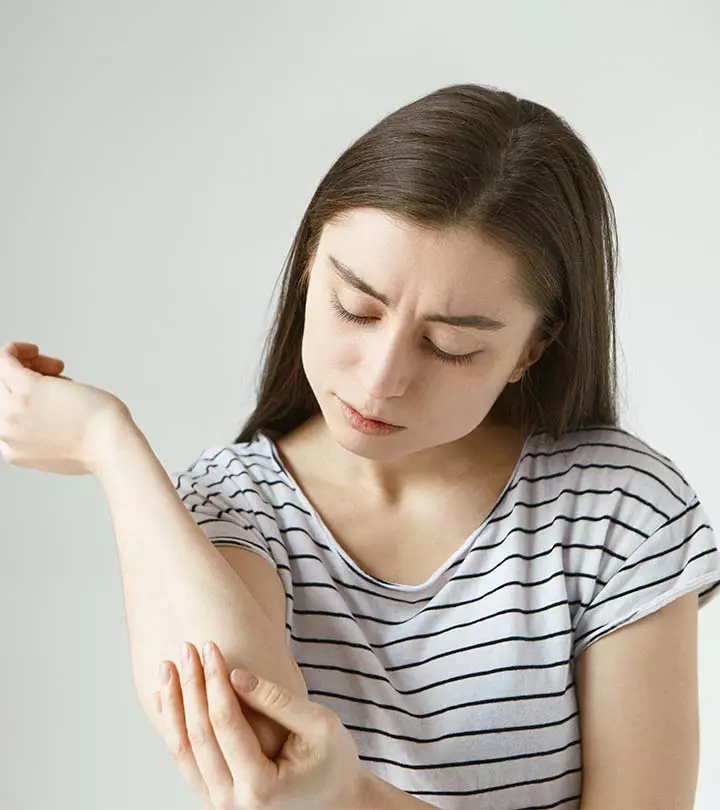
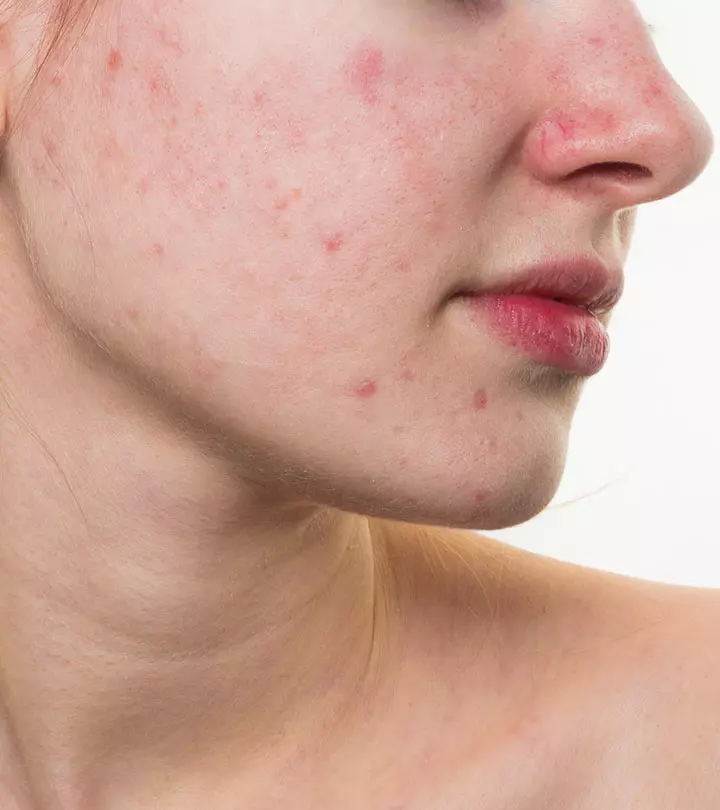
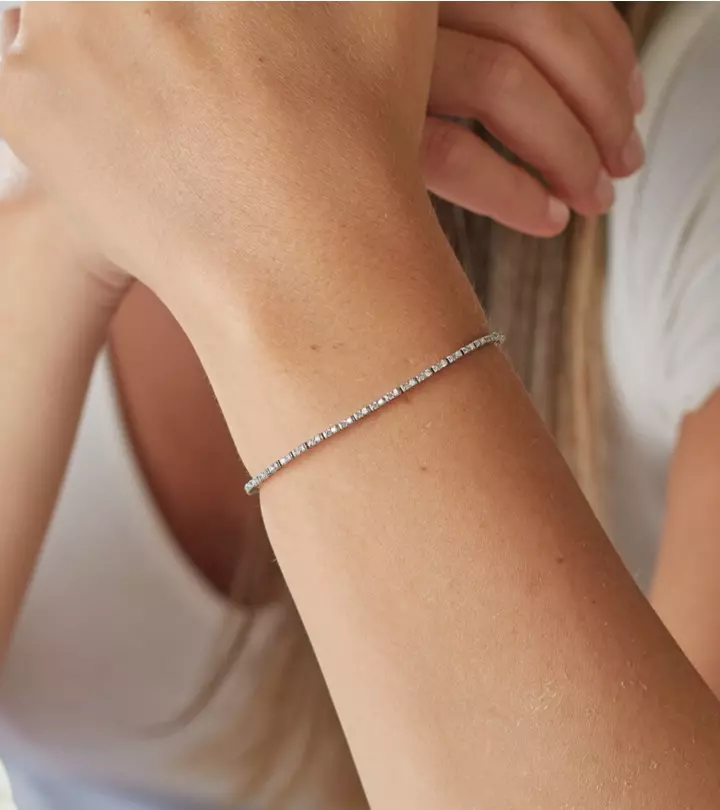
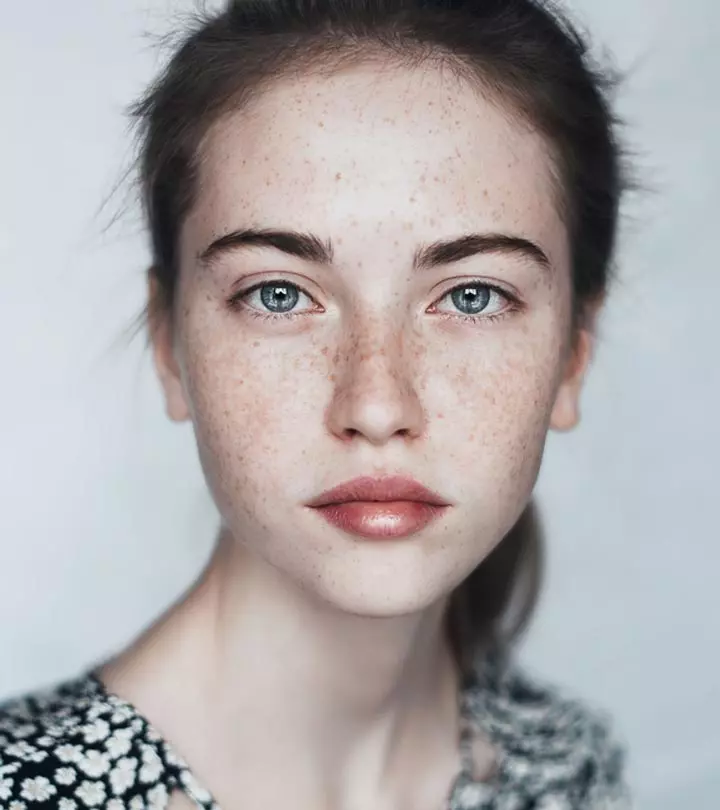


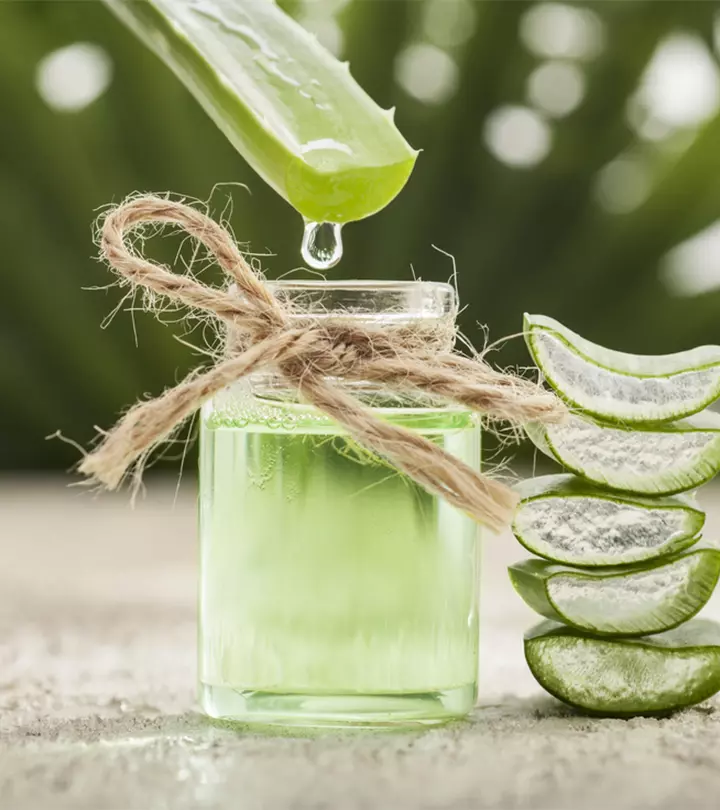

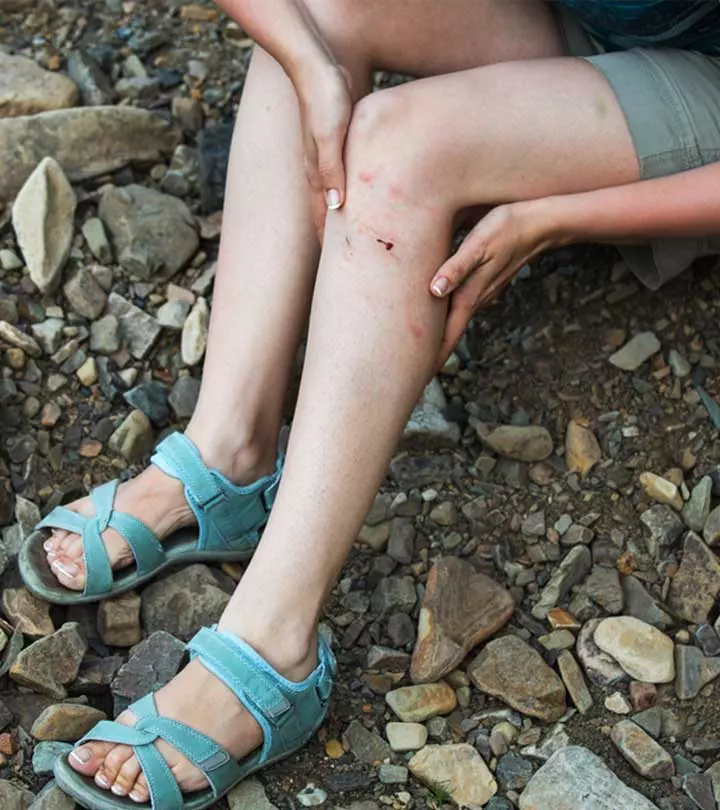
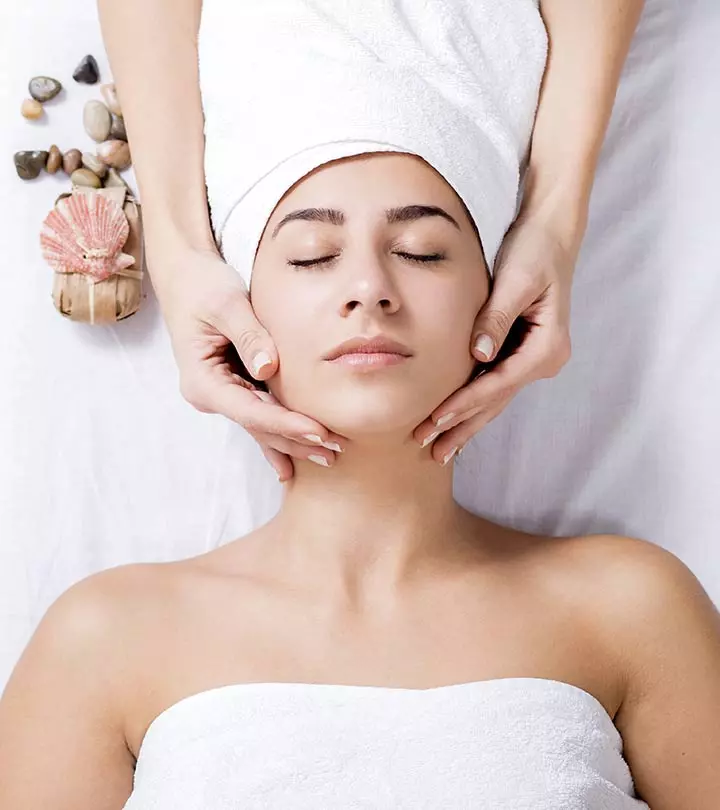
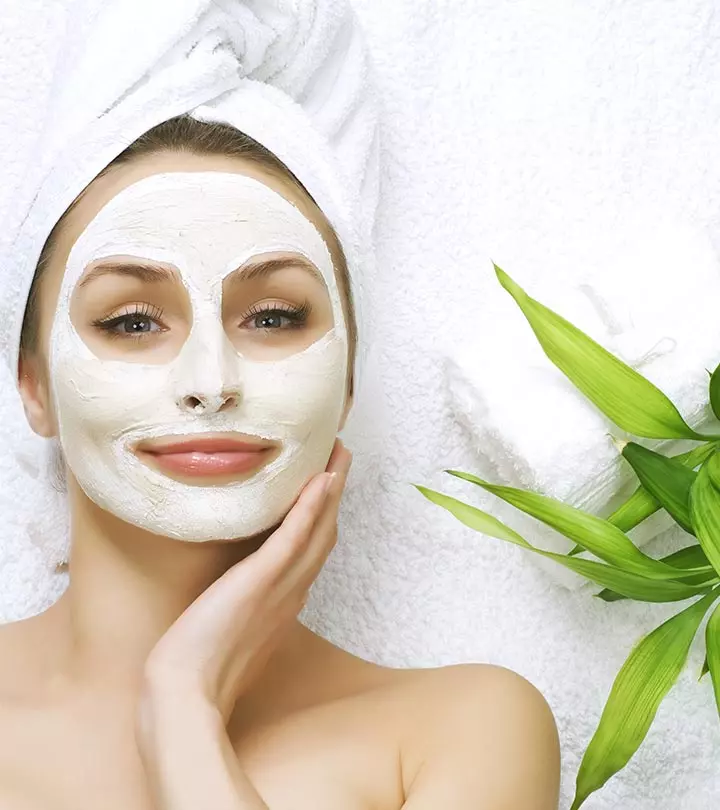
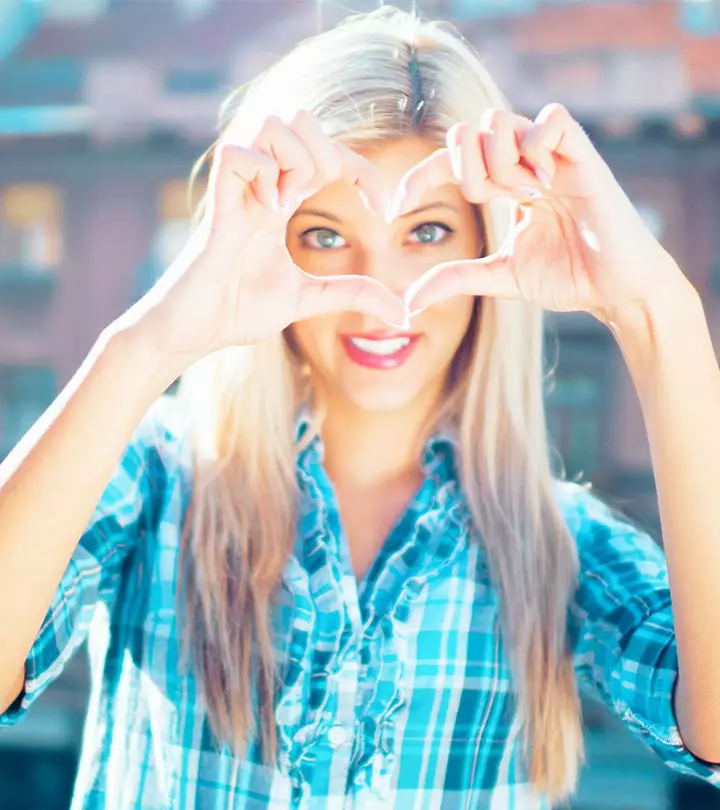


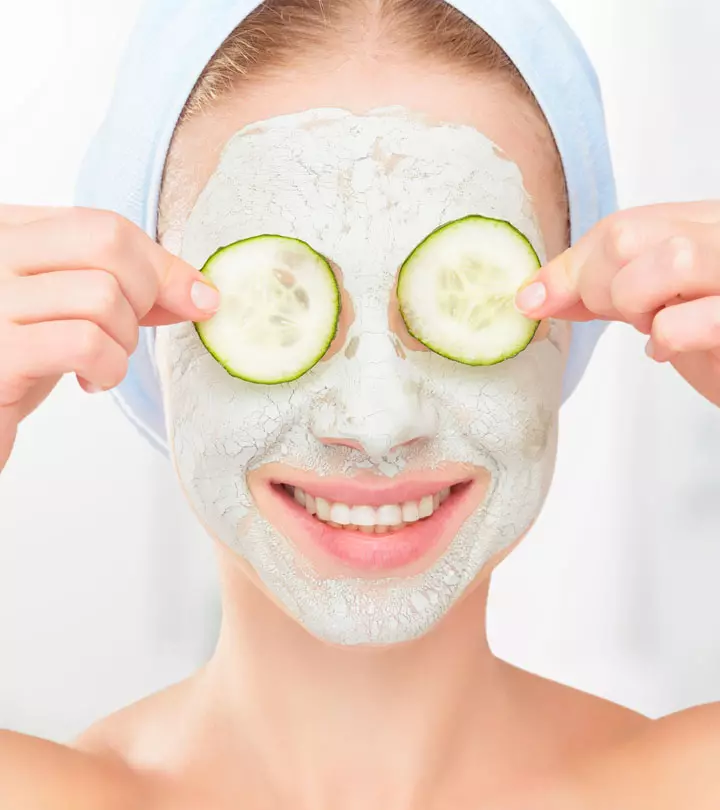
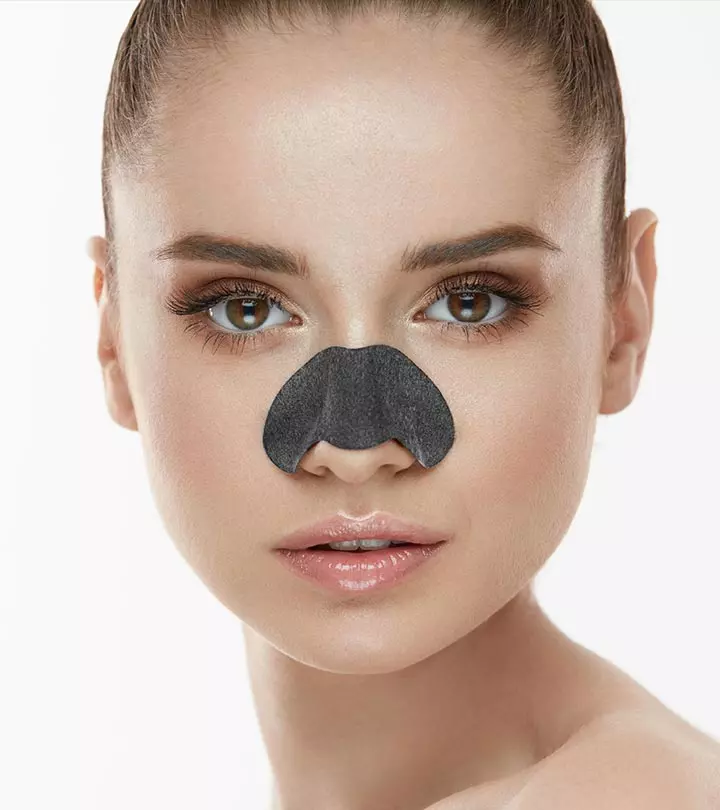
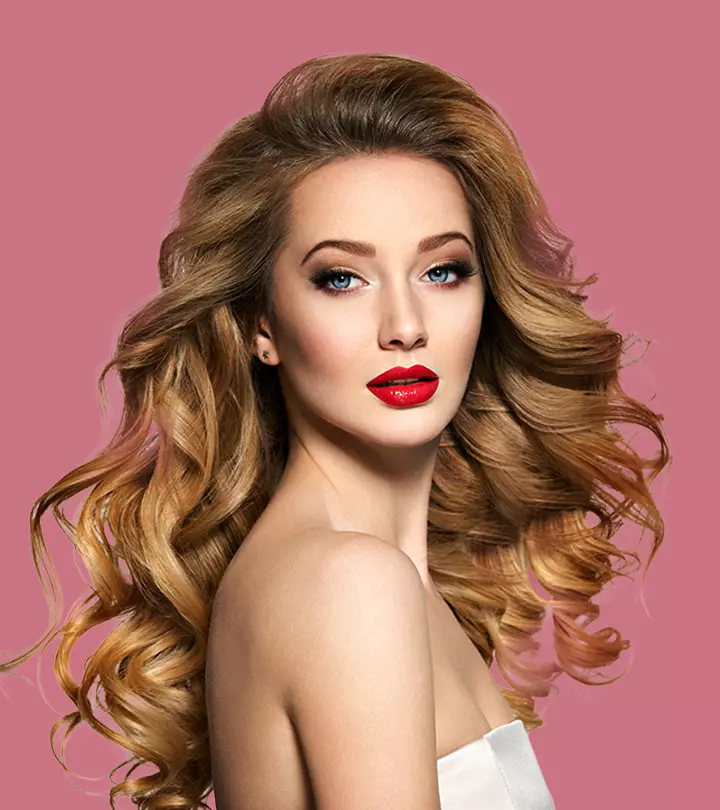

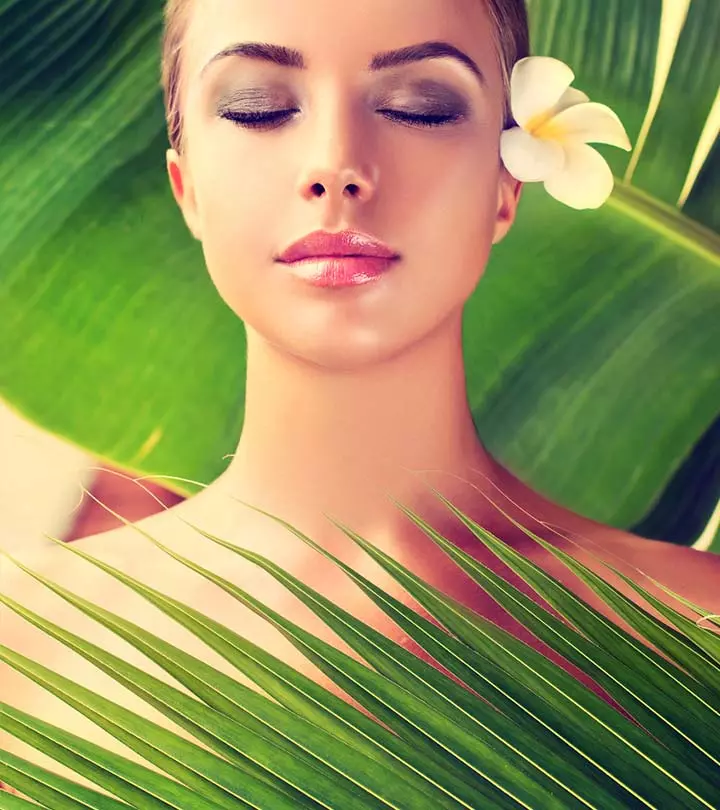
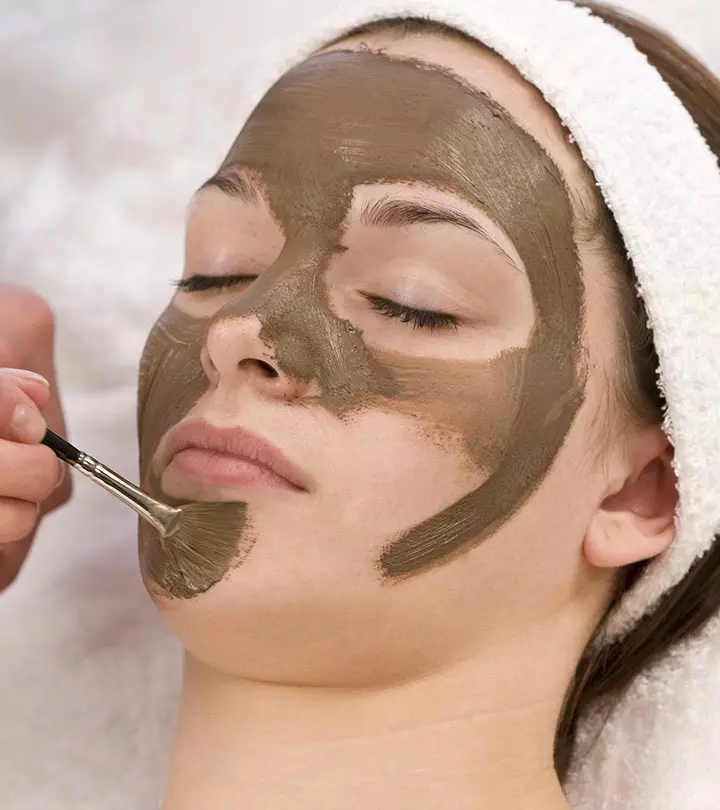
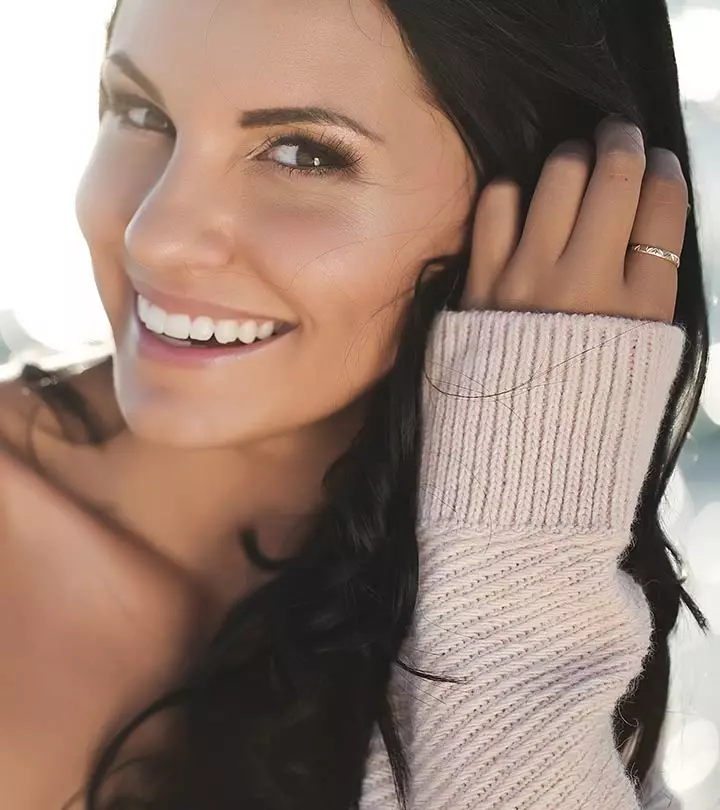
Community Experiences
Join the conversation and become a part of our empowering community! Share your stories, experiences, and insights to connect with other beauty, lifestyle, and health enthusiasts.